Pierre Saint Amant - The Perennial Challenger
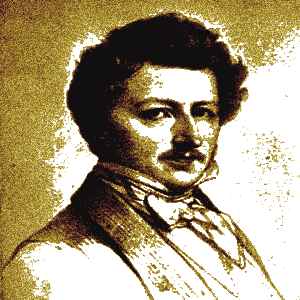
Pierre Saint Amant
Saint Amant did not play chess seriously until well into adulthood. He was 23 when he learned from the master Wilhelm Schlumberger. Later he frequented the famous Café de la Régence.
Although he never quite reached the playing strength of Deschapelles or Labourdonnais, he was equal or superior to all others in the famous Parisian venue.
Young Pierre

Pierre Saint Amant was born into a wealthy family of wine merchants
Not much is known of his childhood but he would certainly dabble in the family business as he grew older. Although he was a wine merchant at several different points in his life he also tried numerous other lines of work.
His first of many careers began when he was made Secretary to the Governor of French Guiana at the age of 19. He would be dismissed from his post a couple of years later for his opposition to the slave trade in that country. He would go on to live a remarkable life peppered with distinguished achievements in many fields, not least among them, the great game of chess.
Career Choices

Pierre Saint Amant worked in a variety of industries
Later he would leave his days as a leading chess master behind him and he achieved perhaps even greater notoriety. In 1851 he traveled to San Francisco as the French Consul to California. There he wrote “Voyages en Califonie et dans l’Oregon. A prolific writer, he also wrote several books on the French colonies.
He displayed courage, determination and great diplomacy throughout his military career. He was Captain of the National Guard in 1848 when a violent mob attempted to storm the Tuilleries. Saint Amant met with the mob and remonstrated with them. He was so convincing that instead of destroying the Palace they promptly appointed him as the Governor! But we take up his story in 1823 when he first learned chess from the mercurial Schlumberger.
First Forays into Chess
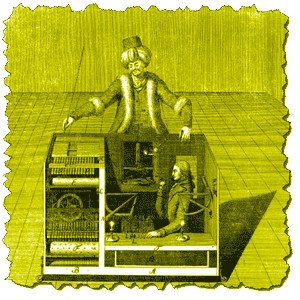
William Schlumberger left Paris for the United States to operate the Turk
He was often known as Mulhouse in chess circles as he was born in Mulhouse, Alsace. Alsace at this time was a province long contested by France and Germany. It is possible that Saint Amant gave him this nickname. Schlumberger coached many chess students for a fee and Saint Amant was one of his pupils.
Eventually Schlumberger would leave Paris to operate the infamous chess machine, the Turk, in cities across the United States for $50 a month. He had however by this stage developed Saint Amant from an enthusiastic beginner into a player of some repute.
Parallel Path with Boncourt
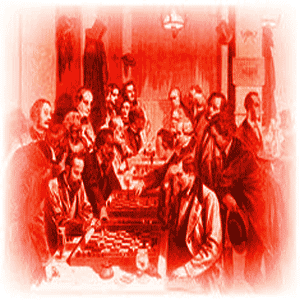
Pierre Saint Amant and Hyacinthe Henri Boncourt played many games in a keenly contested rivalry in settings just like this
Then at some point in the afternoon, his wife would come by, rap the window with her parasol. This was his lunch call. She would turn on her heel, never thinking to enter and head for home. Saint Amant, no matter what the state of play, would invariably abandon the game at once. He would get to his feet, salute his opponent and head for the door.
He was proving to be a great player, rising through the ranks at the cafe. He was roughly equal to Boncourt who was the best player in Paris save for Labourdonnais. These two would go on to have a great rivalry.
Birth of the French Defense
Pierre Saint Amant recommended 1...e6 as a reply to 1.e4 to his Paris team in their Correspondence match against London. The move subsequently became known as the French Defense
Saint Amant recommended 1...e6 as a reply to 1.e4 in the game where Paris had the Black pieces. Paris won the game ultimately after an interesting battle. Both games actually went to the French to give them a 2-0 victory.
The move 1...e6 had previously been an obscure sideline, it did not have a name. This game put the move into the limelight. It was studied heavily by many masters and lots of new lines were developed. 1...e6 became known as the French Defense and is now one of the most widely known systems in chess for Black.
Losses Against Boncourt and Cochrane

Pierre Saint Amant suffered defeats to Boncourt and Cochrane
He was largely successful in London where he traveled for his business as a wine merchant. He did suffer a losses on occasion though. John Cochrane, a highly rated master, beat him 6-4 with just 1 draw in the 11 games.
Back home in Paris, Saint Amant had a long running match with Boncourt. They played about 35 games in 1840. Boncourt is said to have had led by 3 wins at the end of this series.
A Tale of Two Matches

Pierre Saint Amant and Howard Staunton played two matches, the first one in London and the second one in Paris
The earlier clashes between Labourdonnais and McDonnell normalized the idea that a clash between the best player in Paris and the best player in London would produce the best player in the world.
Pierre Saint Amant was regarded as Labourdonnais' successor in Paris. Howard Staunton was the new champion in England. They played two matches, one in London and a longer one in Paris.
Saint Amant won by 3.5 to 2.5 in London but Staunton triumphed by 11 wins to 6 in Paris. Staunton became the first Englishman to gain recognition as the world's strongest player. Staunton - Saint Amant.
Aftermath of Staunton
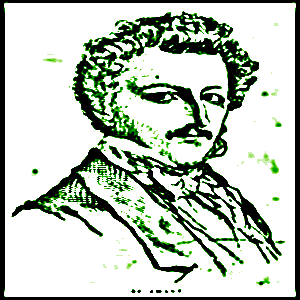
Pierre Saint Amant wound up his chess career after the defeat to Howard Staunton
These efforts continued throughout 1844 and 1845. Staunton was very happy to play a third match. Saint Amant's heart wasn't really in it because although he publicly backed the plans, privately he was moving on from competitive chess.
He found fault with every deal that the two Federations put together and the match never took place. Saint Amant disappeared from high level chess and pursued other interests.
Later Years

Pierre Saint Amant achieved distinction in a number of fields
Two years later he was appointed as French Consul to California. California had just joined the Union and France wanted to build relationships with the new state. He didn't travel until the following year, first attending the London Chess Tournament of 1851. This was the earliest of it's kind comprising of the world's top 16 players.
They would play each other in a league system with the winner at the end being the player with the most points. This new format would become the norm, replacing the old matchplay between two masters. Saint Amant attended only as a spectator, he did not compete. Years later in 1872, while in retirement in Algiers, he was thrown from his carriage and died from his injuries.
Legacy of Saint Amant
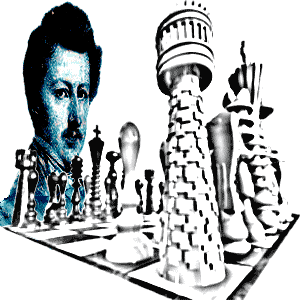
Pierre Saint Amant had the dashing style of Greco, with the ingenuity and steadiness of a veteran chief
His recommendation of that reply to 1.e4 in the correspondence match against London gained it the title, the French Defense. It also led to a major investigation of the previously rarely tested sideline. Heavily analyzed theory materialized on what would become known as the Winawer, Classical, Rubinstein, Tarrasch, Advance and Exchange Variations.
George Walker: Saint Amant's game unites the dashing style of Greco, with the ingenuity and steadiness of a veteran chief. Young in years, he is aged in chess. Quick as lightning in commonplace situations, St. Amant takes a full measure of contemplation in positions of difficulty. His philosophy of the game can be seen in his other games.
Moving On

Howard Staunton
Pierre Saint Amant was recognized as the best player in the world between 1840 and 1843. His tenure as the top player ended with the famous match in Paris against the first English champion of the world.
Soon would come the era of big time tournaments between the world's leading players. No one would do more to develop this new concept and bring it into being than Saint Amant's conqueror, Howard Staunton.






